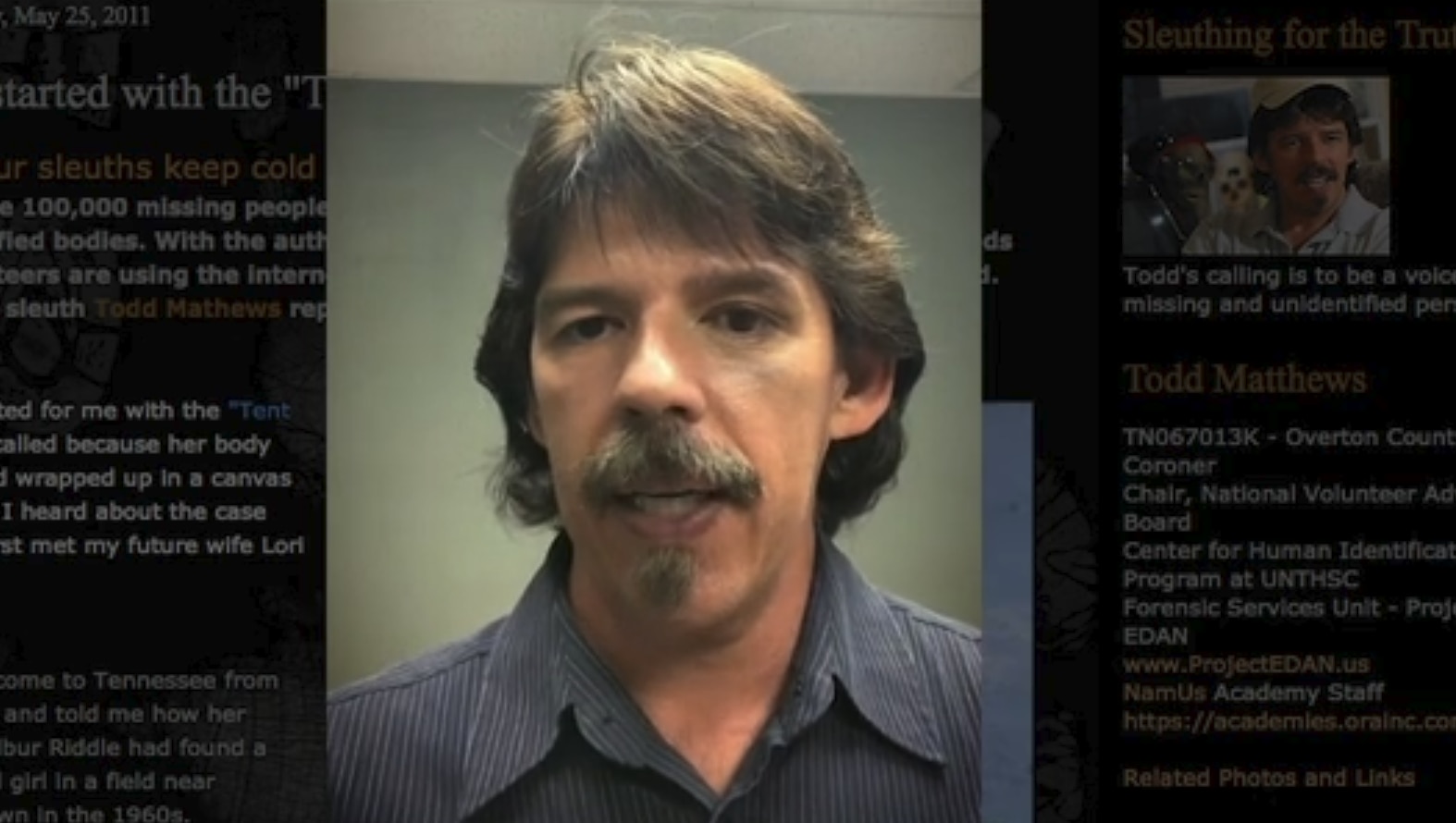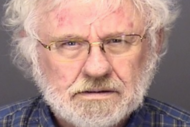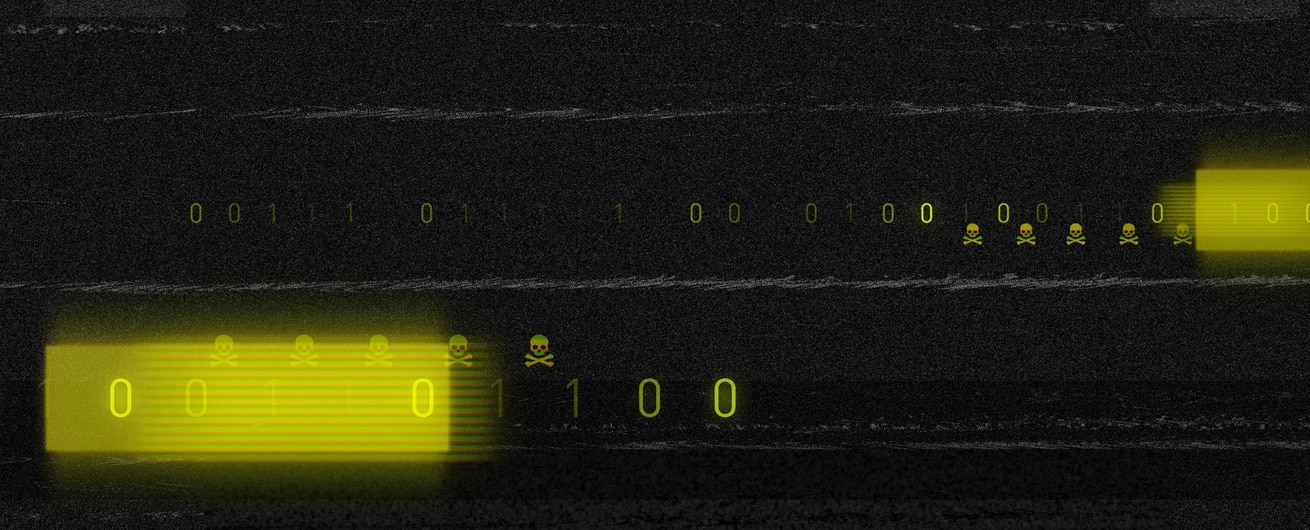Create a free profile to get unlimited access to exclusive videos, breaking news, sweepstakes, and more!
Who Was The First Internet Sleuth? Meet Todd Matthews, Who Cracked The 'Tent Girl' Case
Todd Matthews was web sleuthing before the term existed, and his original efforts brought solace to Barbara Ann Hackman Taylor's family.

Thanks to the internet, everyone’s a detective now, amirite?
There are dozens, if not hundreds, of Reddit groups and message boards dedicated to those who are spending their free time investigating unsolved crimes using the internet. In 2009, a group of clever sleuthers were able to help solve the 2009 murder of Abraham Shakespeare, a Florida laborer who won millions in the lottery. Then there's the "Zodiac Killer" board, full of sleuthers working to crack the ciphers that the serial killer who called himself the Zodiac created, decades after he sent them to the media and police. Michelle McNamara, author of "I'll Be Gone in the Dark: One Woman's Obsessive Search for the Golden State Killer," a book widely credited with bringing the attention necessary to help solve the GSK case, became obsessed with the then-unsolved case after becoming entranced by message board posts on the subject.
There are so many people these days calling themselves internet sleuths and armchair detectives — but it wasn't always this way.
Todd Matthews is thought to be one of the first internet sleuths, successfully connecting unidentified human remains back to a missing woman case in the late 1990s.
“I didn’t hear the word sleuth at the time,” he told Oxygen.com. “There were no cyber sleuths.”
Despite being a pioneer for this kind of armchair detective work, Matthews never wanted to become a sleuth himself. It happened organically after a mystery was passed on down to him.
“My father-in-law that found the body 30 years ago,” he explained, referencing the body he later helped identify. “I don’t think he ever thought I’d be the person who solved it.”
Matthews first heard about the case on Halloween night 1987 when he was just 17. His future wife told him how her father had found the body of a Jane Doe in Scott County, Kentucky in 1968, according to NBC. The then-unidentified body was found in a tent bag, which led to her being nicknamed “Tent Girl.”
Matthews became infatuated with the mysterious woman, who at the time was thought to have been just a teen when she died. Soon, he felt a need to try to solve the mystery.
He began sleuthing, and since it was the 1980s, it had to be done without the help of the internet. He’d visit libraries and make lots of inquiries over long distance calls, which took time and money.
“I didn’t make a lot of money [at the time],” Matthews said. He was working as a factory worker at an auto parts manufacturing plant for minimum wage. But he spent his nights trying to find a way to identify the human remains known as “Tent Girl.”
During the 1990s, the introduction of the internet made Matthews’ armchair investigating a whole lot easier. By 1997, he had created a website, TentGirl.com. But of course, navigating online wasn’t as sophisticated or user-friendly as it is now.
“At that time the internet was so different than it is now,” Matthews mused about the age of dial-up. “Someone calls and knocks you offline. The time spent on the internet was really precious.”
He researched and did his work on the case on a desktop computer, scrolling through webpages and webpages that took forever to load with small graphics.
Still, he said, it was an upgrade from his research beforehand. And most importantly, the hard work paid off.
After sifting through an online classifieds site, he found a 1998 post from an Arkansas woman looking for her missing sister, Barbara Ann Hackman Taylor. She went missing at age 24.
Based on where she vanished and when, Matthews thought her sibling could be the “Tent Girl,” so he reached out to the woman.
This resulted in the positive identification of “Tent Girl" in 1998. Her murder still remains unsolved, but thanks to Matthew’s detective work, her family finally got to bury her.
“Todd Matthews and the work he put into solving the identity of 'Tent Girl' was probably the single most important moment in citizen detecting,” Lance Reenstierna told Oxygen.com. He, along with Tim Pilleri, have been investigating on their own the disappearance of Maura Murray, a woman who vanished in New Hampshire in 2004. They even have their own armchair detective podcast "Missing Maura Murray” where they delve into the case and were featured on Oxygen's "The Disappearance of Maura Murray."
Reenstierna called Matthews a “trailblazer” because “aside from solving the case, as non-law enforcement, in a time when the internet was not commonly used by the masses, he recognized his obsession, and focused that energy in a positive direction.”
Now, Matthews works as the director of Case Management and Communications with the National Missing and Unidentified Persons System. He also founded Project EDAN, which aims to match missing persons with human remains with the help of forensic artwork, and he oversees the Doe Network, an online database also dedicated to matching missing persons with unidentified decedents.
“Before Tent Girl, his life path was seemingly plotted out,” Reeinstiera said. “But after he identified her, he had the courage of his convictions to change that path. The creation of NamUs and his continual ability to adapt to the times and technology is incredibly important. Criminals adapt in order to evade justice. Justice has to do likewise.”
Matthews said his intentions with trying to solve the “Tent Girl" case were pure.
“I didn't know what the outcome of this would be. There was no selfish motive. I had no idea that I’d be talking about her 20 years later. I thought it would be long forgotten today.”
As for web sleuthing nowadays, he agreed that there are definitely some great sleuths out there, but he also said that there may sometimes be “a little too much noise.”
He said he doesn’t want to join any of the Reddit groups, citing observations of some more aggressive forms of sleuthing, which have no connection with law enforcement. “Some of their motivations may be a little different [than his with 'Tent Girl']."
Consider James Renner’s book, “True Crime Addict: How I Lost Myself in the Mysterious Disappearance of Maura Murray." He, like Reenstierna and Pilleri, spent a lot of time doing detective work independently, often online, for Murrary's case, which he aimed to solve himself. A 2016 New Yorker article entitled "'True Crime Addict' and the Serious Problem of Internet Sleuths" criticized his approach and the approach of some online sleuths in general.
"He posted every rumor sent his way, no matter how scurrilous or unhelpful," that article states about Renner's work.
It added that "the line between investigative crime journalism and harassment can become blurry and difficult to manage" and that with Renner, "he tends to think that an unwillingness to talk to him is a reason to classify someone as suspicious." The author of the New Yorker piece concluded that online sleuths "rarely, if ever, solve crimes. They are drawn to the most dramatic possibilities and ignore more tedious solutions."
Of course, Matthews did solve part of his case. And he's willing to admits that he originally made some mistakes while sleuthing.
“What we did was wrong,” he said, in reference to some of his sleuthing with “Tent Girl.” “I responded to a family. I am not law enforcement. You can’t just cold call a family. They could be part of the crime.”
Reenstierna agreed that not all armchair detective work is good, but still believes in its necessity.
"What these folks do with the information, after uncovering it, is the key. Egos have to be set aside and critical thinking has to be put to use. A healthy, productive relationship with law enforcement is necessary. Although at times there will be a very vocal group of internet sleuthers spreading misinformation and vitriol, there is a much more responsible group working in the background, putting the energy of their obsession to good use.”






























